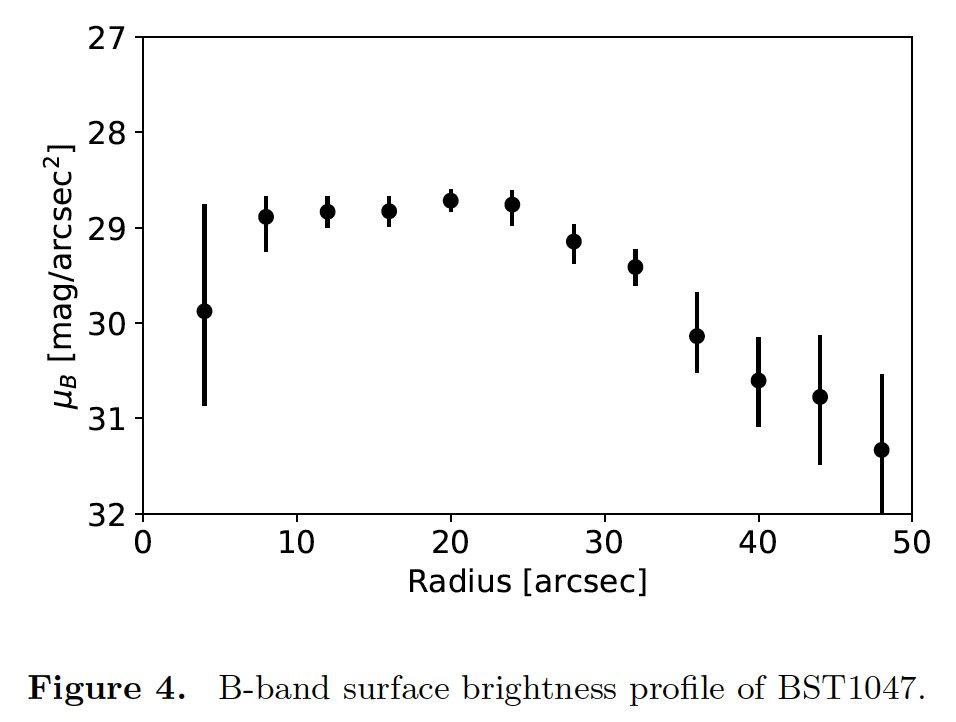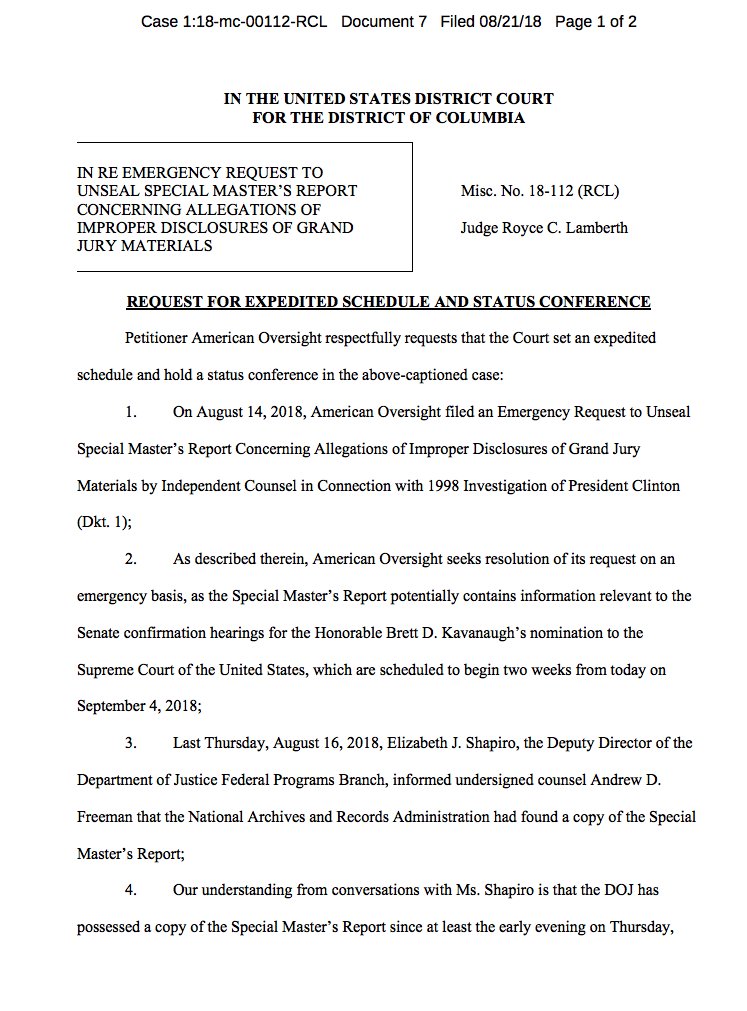The full story can be found in our paper, posted last week on ArXiv: arxiv.org/abs/1807.11544
@Valeandromeo and Paul Harding. Aaron took the optical imaging, Chris discovered the object and worked on photometry, Tom provided the HI data, and Paul made the Burrell Schmidt the amazing LSB imager it is today.
Carr: Oh, and I did an online search at that coordinate, and there is a radio source there, too.
Mihos: <stops dead> Say what?
Carr: Yes, at… um... 21-cm, it says.
Me: Say what?
Here’s the surface brightness profile showing a peak (PEAK!) surfb of muB=28.8. That’s pretty dang faint — in fact, it makes it the faintest extragalactic object found via integrated light. That @therealCCarr found it at all is amazing.













